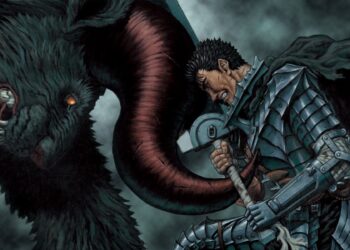Ah, Hunter pets. They are not just sidekicks. They are furry extensions of our Hunter selves. They DPS and tank, sometimes better than us. They can also get stuck, causing laughter in tense moments. To master the Hunter class in World of Warcraft, know your animal companions well. This is your guide to Hunter pets, without the pet hair.
Hunter Pet Limits and Mechanics: How Many Furry Friends Can You Hoard?
First up, let’s discuss storage. In WoW, there are limits to how many creatures you can keep in your stable. This is not a digital zoo. What are the numbers?
- The Grand Total: 205 Pets. This is your magic number. You have two hundred five companions at your call. That’s more than what most real shelters can house. You’re a digital Dr. Doolittle.
- Active Duty Squad: 5 Pets. From that total, only 5 can be active at one time. These are your A-Team, ready for action. They sit in your pet bar, awaiting deployment.
- Stable Retirement Home: 200 Pets. The other 200 enjoy retirement in the stable. Think of it as a luxury pet spa. When you want a change, swap in a stabled pet.
You may wonder, “Can I start with all these slots?” Absolutely not. Mastering pets takes time and experience. As you level up, you unlock more slots for active pets. The game rewards your growth. It’s motivating to level up.
On a slightly related note, did you know Hunters can dual wield from the start? Yes, you can wield a weapon in each hand. Is it the best option? Maybe not. Does it look cool? Definitely. Looking cool is half of playing a Hunter.
Now, let’s talk about the pet bar. This UI shows your active pets. You can unleash one or two pets at a time, which we will cover later. The five in your pet bar allow for strategic gameplay. Facing a boss needing interrupts? Use a gorilla with Pummel. Facing a damage phase? Swap to a wolf with Furious Howl. It’s like having a Pokémon team, but furrier.
To expand your collection, tough choices arise. Taming a new pet might require sending one to the stable. Or, if feeling cold-hearted, you could abandon a pet. Who would abandon their loyal pet? Maybe if it’s that boar you tamed out of obligation.
Where do you store these critters? At the Stable Master, naturally. These NPCs are scattered throughout Azeroth. They help manage your pet storage. Chatting with them can solve pet summoning issues. Think of them as concierge but without judging your pet names.
A little history on pets and loyalty. Once upon a time, your pet’s happiness mattered. If unhappy, they might nibble on your ankles instead of enemies. Pets needed 5% of your XP for loyalty to grow. Thankfully, those days ended. Modern pets are less demanding and remain loyal with minimal effort. Feeding them is mostly automated.
Double Trouble: Unleashing Two Pets at Once (The Not-So-Secret Secret)
Let’s tackle the big question: can you summon two pets at the same time? Generally, no, but with a twist. The rule is one pet at a time. But of course, there’s an exception.
Enter the Animal Companion talent. This talent allows you to have two pets out. Suddenly, you have double the claws and teeth. However, there are limits to this second pet.
This sidekick operates with reduced capacity. It will not perform basic attacks. No Bites or Claws. It’s like it skipped its combat training. Yet, it still contributes through Beast Cleave and attack speed boosts.
Which pet gets summoned as your Animal Companion? It’s not random. It depends on the pet in the furthest left slot of your stable’s first page. If that slot is empty? No extra pet for you.
There is a trade-off with dual-pet power. Taking the Animal Companion talent reduces your main pet’s damage by 35%. Ouch. You trade some damage for utility and limited damage from a second pet. Is this worth it? It differs based on playstyle and situation.
For some Beast Mastery builds in AoE fights, an extra pet helps despite the damage reduction. In single-target boss fights, it may not be as useful. Experiment and find what suits your preferences.
Finally, let’s cover the burning desire of every Hunter who’s…
Ever wanted to confuse others? You can have two pets that look identical. Tame two pets of the same type. You can find identical wolves, boars, or raptors. Tame them both, and voilà! You have doubled the impact. They are distinct in-game entities, but it looks like you’ve cloned your pet. Impressive or unsettling? You choose.
Pet Specializations and Abilities
You have a stable full of pets. Maybe you even have the double pet look. But are you just collecting for bragging rights? Each Hunter pet belongs to a specific family. These families dictate specializations. That can impact your gameplay. Choosing the right pet is about strategy, not just looks.
Good news: in the next expansion, The War Within, all pets get a damage standardization. Equal damage across the board. No more stressing whether a cat or a raptor is better in DPS. This is a win for pet diversity. Choose a pet for its looks or abilities. Damage output won’t suffer, so enjoy the freedom!
Now, let’s talk specializations: Tenacity, Ferocity, and Cunning. Tenacity pets are tanks. They soak damage and keep enemies away. In raids, these pets provide defensive benefits. They have extra health and abilities that keep enemies focused on them and not on the healers.
Ferocity pets deal damage. They are raw offensive power. Cats, raptors, and wolves are examples. They hit hard but lack durability compared to Tenacity pets. However, they bring utility. Wolves improve critical strike chances with their Furious Howl ability. It boosts your team’s damage during high-damage phases.
Cunning pets are utility specialists. They offer valuable abilities but don’t tank or damage as much. Gorillas interrupt enemy spells with their Pummel ability. This skill can turn the tide in dungeons and PvP. Spiders slow enemies with webs. Clefthooves offer Blood of the Rhino to heal themselves. Cunning pets adapt and provide useful skills.
We need to discuss a crucial ability: Mortal Wounds. This debuff reduces healing for the target. It’s vital in both PvP and PvE, especially against healers. Many strong pets fall into this category: Riverbeasts, Raptors, Hyenas, Rodents, Carrion Birds, Ravagers, Scorpids, and Wasps. Choose wisely for content where healing reduction matters.
Hunter Pet Customization
Sometimes, Hunter pets can be too large. Have you tried navigating a raid with a giant Devilsaur causing chaos? It isn’t ideal. In World of Warcraft’s wisdom, they “nerfed” Hunter pets literally by shrinking them. Some beasts were too large, so they got downsized for manageability.
If you miss your giant pet towering over enemies, there’s a solution: Kibler’s Bits. It sounds odd, but it’s a consumable item that enlarges your pet for 20 minutes. Your pet will regain its oversized glory, causing fear and maybe annoyance due to view blocks. A fun item; use it wisely!
Choosing Your Hunter Pet
With all this pet knowledge, how do you choose the right one? It depends on your Hunter specialization and goals. For Survival or Marksmanship, a Tenacity pet is ideal. They provide survivability and tankiness outside of Beast Mastery’s comfort zone. Personal preference helps you choose one with a cool look.
For Beast Mastery raiders, Tenacity is still best for that defensive boost. Your survival helps deal damage. Within Tenacity, there are options. Cats emerged as top-tier PvE choices. Yes, cats are damage machines! They offer solid damage and possibly utility abilities, so don’t overlook them.
Taming the Wilds
You want to expand your pet collection? You see a majestic wolf, a fierce raptor, or even a charming clefthoof that you need beside you. Taming these creatures is straightforward. Target the pet and use your “Tame Beast” spell found in your spellbook under the Hunter tab.
Two rules are crucial for taming. First, your target must be the same or lower level than you. You can’t tame a level 70 elite beast at level 20. Sorry, level up first. Second, some exotic pets need more effort. Feathermanes require completing the “A Glorious Campaign” achievement first.
This involves finishing the Breaching the Tomb storyline and the Night of the Wilds quest chain. Completing these earns you a class mount. Next, buy a Tome of the Hybrid Beast from Pan the Kind Hand in Trueshot Lodge for 1000 Order Resources.
Many hoops exist for a feathery wolf. But hey, style points, right?
Hunter Pet Care: Keeping Your Beasts Happy (and Looting Corpses)
A quick note on pet care. Remember pet loyalty and happiness meters? They mostly vanished. Modern pet care is less demanding. The best way to increase pet happiness is by feeding it. Even that is mostly automated. Your pet happily eats any meat you toss (or fish, or fungi). Keep pet food in your bags. You are good to go. No more micromanaging happiness or worrying about them running away.
A more active part of pet care is looting. Yes, your pet helps with corpse looting. When you engage an enemy, your pet applies Hunter’s Mark. The % attack bonus is gone, but the mark remains for commands. This mark tells your pet to attack. Once the target is dead (thanks to your combined Hunter-pet skills), hit the same attack button again. Your pet dashes over to loot. Convenient, right? It’s like a furry vacuum for corpses. Efficient and slightly satisfying.
So, there you have it. Your comprehensive and humorous guide to Hunter pets in World of Warcraft. Go forth, tame beasts, build your digital zoo, and dominate Azeroth with loyal companions. Just try not to block your raid leader’s view too much, okay?










